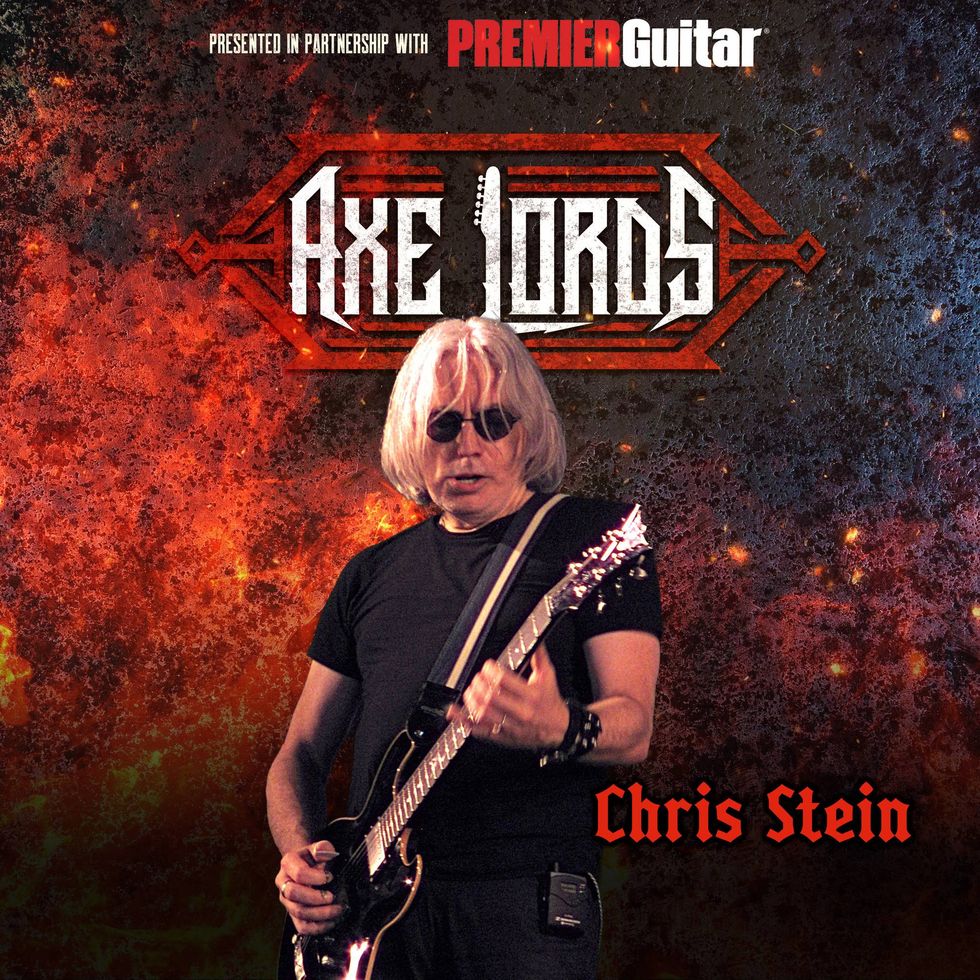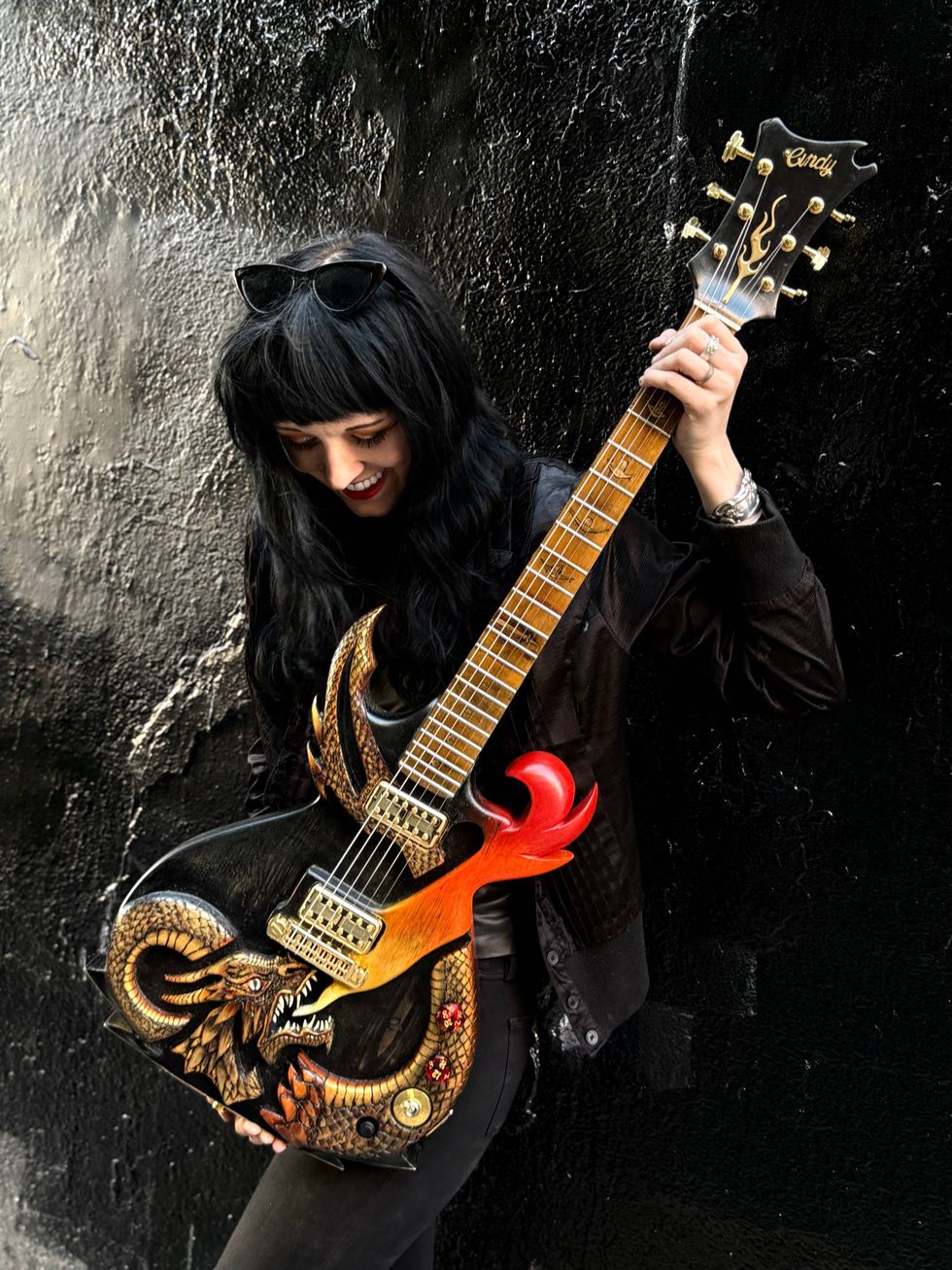You have to figure that any guitar made to celebrate a 125th anniversary is going to be special. The only question is, how special? |
After all, Gretsch has carved out quite a name for itself over the last dozen decades. In the early days of rock ‘n’ roll, Gretsch guitars started a few revolutions of their own. There’s a lot of history in that name, and sometimes it pops up in places you might not expect to find it (e.g., Ron Asheton of the Stooges played them, as did Malcom Young, who played a ’59 White Falcon on AC/DC’s “Back in Black” tour).
|
Our review model turned quite a few heads around the Premier Guitar offices. The upscale styling of this guitar is downright gorgeous; it is undeniably a special Gretsch with a classic feel. With a big, beautiful hollowbody design, the Double Annie has a gloss finish, Jaguar Tan top and a gold metallic back and sides. It has a “neo-classic” ebony fingerboard, FilterTron-style TV Jones PowerTron pickups and a Bigsby vibrato tailpiece. It is a legacy guitar that loudly proclaims its vintage pedigree. Even the appointments are a throwback to the golden age, like the rosewood pinned Adjustomatic bridge, the knurled straplocking knobs, and the peghead plate that marks the passage of 125 years.
This guitar is not stuck in the past, though. Take, for instance, the Sperzel locking tuners, or the TV Jones pickups, designed to combine the sparkle and definition of vintage FilterTrons but with a fatter midrange and higher output. Even cooler is Gretsch’s back-to-the-future incorporation of a new bracing system — similar in design to the trestle bracing system that was out of use for half a century, but much lighter — which synchronizes the vibrations of the top and back to produce a remarkably open acoustic tone.
The neck is 3-piece maple with a tapered heel and a very subtle V-shape; the ebony fingerboard has a 12” radius, 21 frets, and half moon inlay markers. The fretwork is faultless. The pick attack is sharp and clear even at the low end. The intonation was spot-on when the guitar came to us, and the action is perfect for regular light or medium string gauges. This is not a guitar for super-slinky shredders, but it is seriously playable.
|
The tone is also controlled by a 3-way selector switch. The middle position is a neutral, even tone; the rear position is a low peak for bass emphasis; and the forward position is a high frequency cutoff. With both pickups at full volume through a clean amp and the tone selector in neutral, the guitar produces a very balanced, open sound with an almost acoustic timbre to it, and a clean attack with no bounce or pop that maintains its sharpness even if you strum hard. The decay has a nice even ring, too. The tonal balance of these pickups is truly exceptional.
| Take a Listen* Download the following clip to hear chords on the Gretsch Double Annie with following pickup selections: 1. Neck (tone selector neutral) 2. Neck & bridge (tone selector neutral) 3. Bridge (tone selector neutral) 4. Neck & Bridge (tone selector set on Bass) 5. Neck & Bridge (tone selector set on high cutoff) 6. Neck & Bridge (tone selctor neutral again for reference) Download 1.65MB mp3 |
The neck pickup is lush and deep, but not fat-sounding; the bridge pickup is bright and crisp, but with no brittleness or ‘tinny’ sharpness at the top end. The neck pickup with tone set for high cutoff gets a bit ‘boomy’ in the mids, but you can curb them with volume control, or by mixing in some of the bridge pickup. The bridge pickup on the bright setting has a nice bite, and you can get a pretty good twang going, but with punchier mids, so it’s a bit less edgy than the signature Tele twang.
| Take a Listen* Download the following clip to hear picking on the Gretsch Double Annie with the following pickup selections: 1. Neck 2. Neck & Bridge 3. Bridge (all with tone selector on netural) Download 837KB mp3 |
A few exceptional settings (to my ears, anyway):
1. Neck full vol., tone selector in rear position (bass): very tasty, mellow jazz tone; sweet, thick and round.
2. Neck, vol. around 7, tone selector neutral: bluesy and thick but not too deep; mix in some of the bridge pickup for more bite.
3. Bridge full vol., tone selector neutral: good old fashioned rock’n’roll, a bright and muscular tone that gets a little gnarly when you dig in.
| Take a Listen** Download the following clip to hear some general riffing on the Gretsch Double Annie, utilizing the bridge pickup at full volume and neutral tone. Download 666KB mp3 |
As with any vintage hollowbody design, the Gretsch is more susceptible to feedback in high gain situations, and the light open body means that exposing it to changes in temperature and humidity might cause some tuning issues (as it did for me at an evening outdoor gig in July). In my opinion, though, the only real concern is the Bigsby and of course this caveat doesn’t apply to everyone. Admittedly, a Gretsch hollowbody without a Bigsby vibrato is a bit like Jack going up the hill all by himself to fetch water, but personally, I’ve never had the same kind of love affair with them that other players have. Yes, they’re truly a classic appointment and of course there’s the whole tone thing that many users swear is there even when they’re not being used for vibrato, but I find that I have to use them very, very carefully.
All around, though, this is a superior guitar, and one that has really grown on me. If you’re looking to Gretsch-ify your sound, and you want a perfect match-up for your vintage amp, the Double Annie would be a great way to go. Granted, it’s not the eye-poppingest new Gretsch on the block (that award goes the G6130 Knotty Pine Roundup, or the sparkle-top Billy Zoom custom Silver Jet), but it’s also not selling for a price that will make you hate leaving the house with it. It’s sleek and elegant enough to fit right in with a dapper jazz combo, but it’s got enough tone and muscle to make a big sound in a straight-up rock or country outfit. It’s probably a little too well-groomed for punk, but if you’re still jammin’ on the oldies, or doing the madcap rockabilly thing, this guitar plugged directly into an eager tube amp is ground zero.
*These clips were recorded with the (VOX-inspired) Xits 30 watt Piper XTB amp with an SM57 using a Digidesign M-box and GarageBand on a MacBook Pro.
**This clip was recorded with a VOX AD 120VT modelling an AC30 Top Boost with just a bit of reverb, again using a Digidesign M-box and GarageBand on a MacBook Pro.
Buy if...
you want a new old classic that looks and sounds like nothing but a Gretsch
Skip if...
you''ve been living under a rock and have never heard of Gretsch guitars
Rating...
MSRP $3450 - Gretsch - gretsch.com |



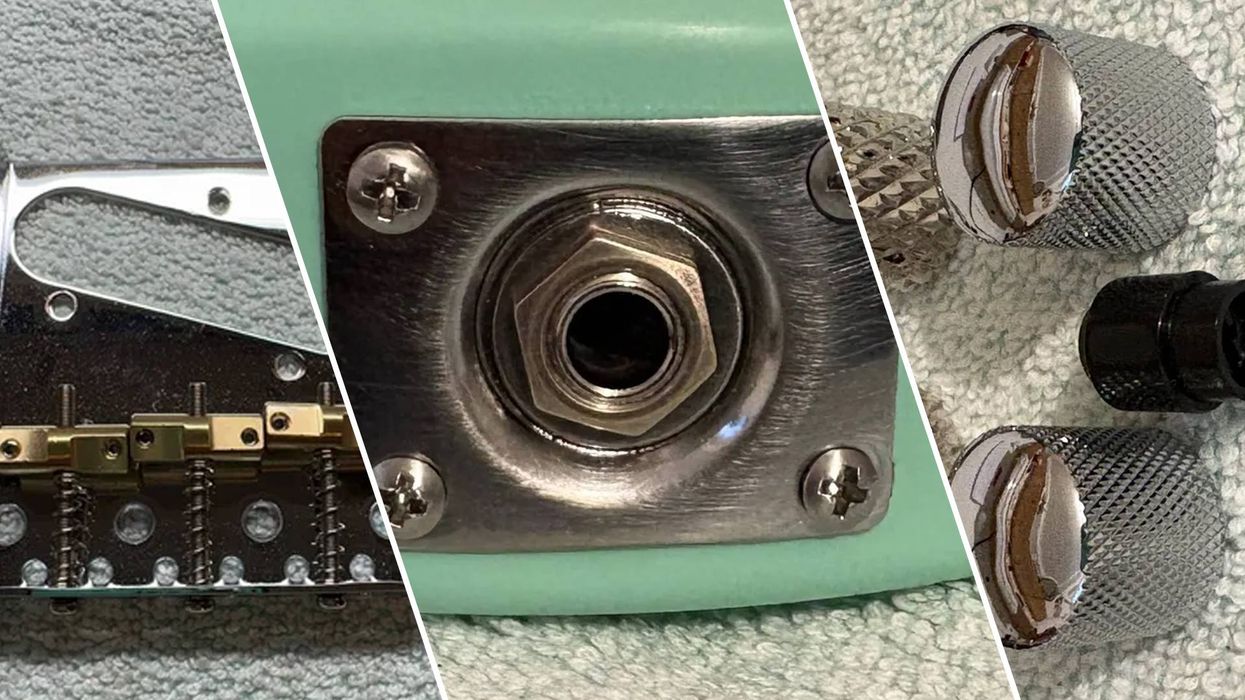



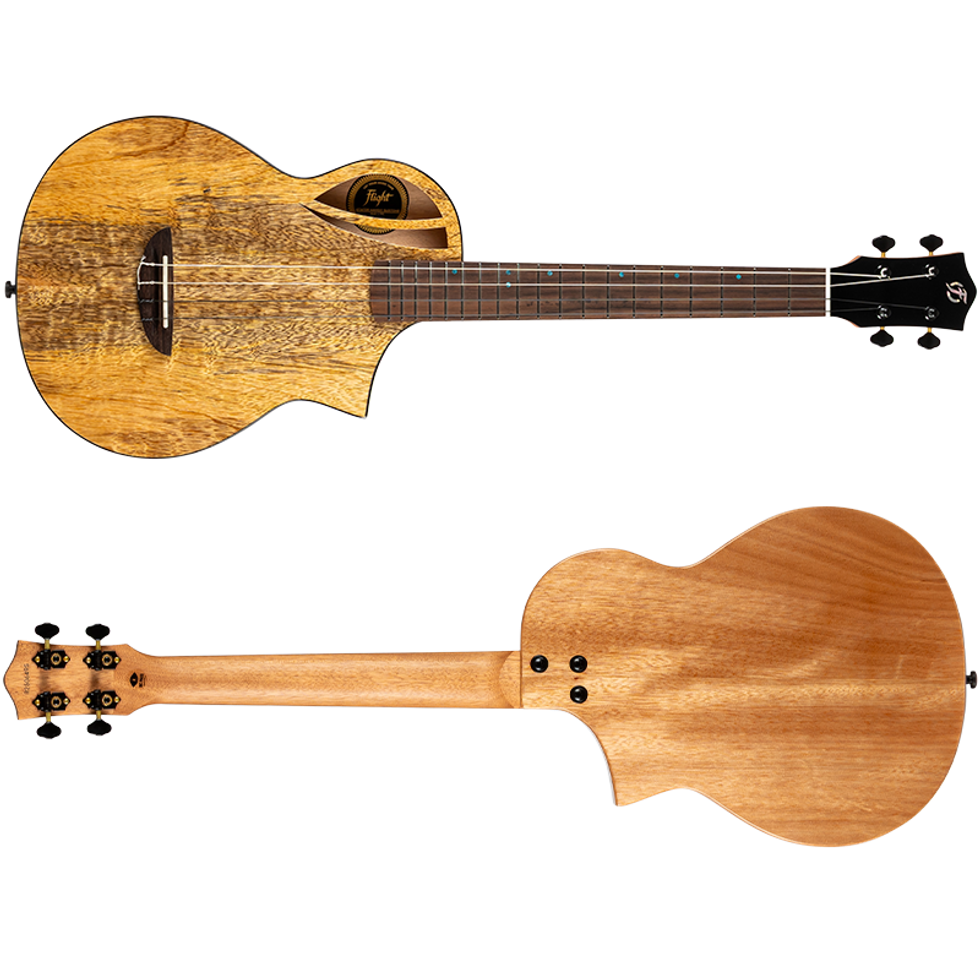
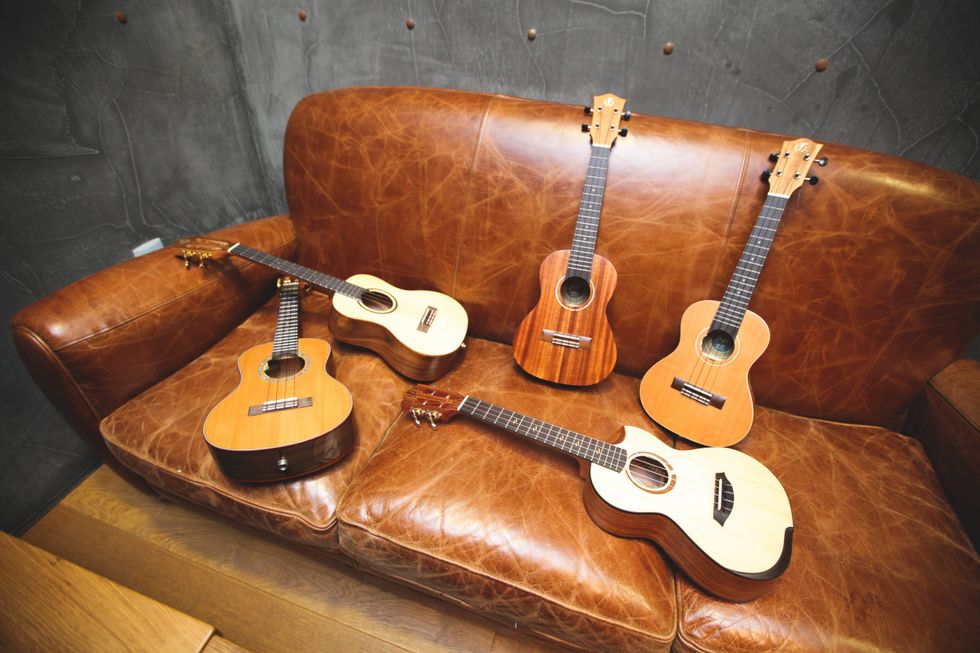




![Rig Rundown: Russian Circles’ Mike Sullivan [2025]](https://www.premierguitar.com/media-library/youtube.jpg?id=62303631&width=1245&height=700&quality=70&coordinates=0%2C0%2C0%2C0)





